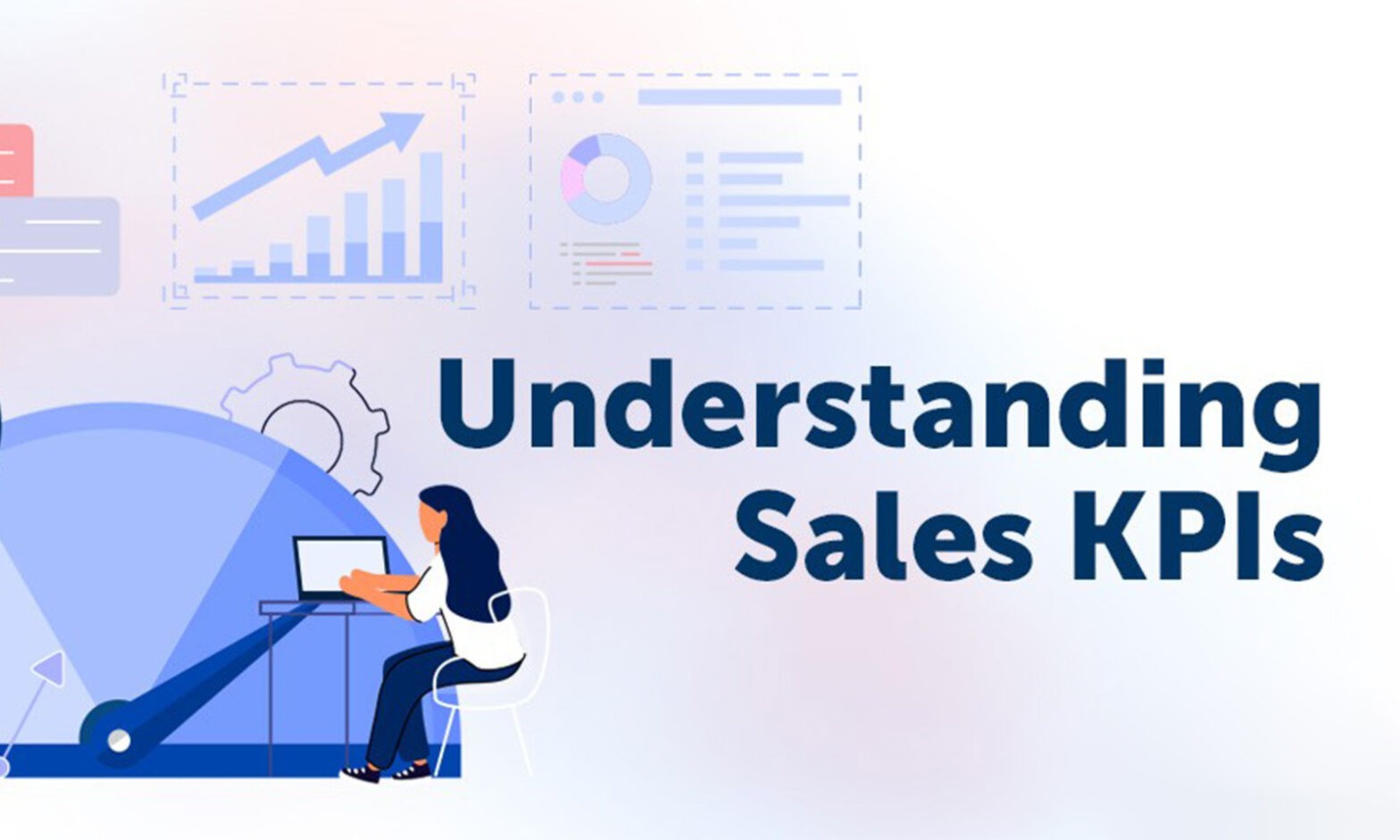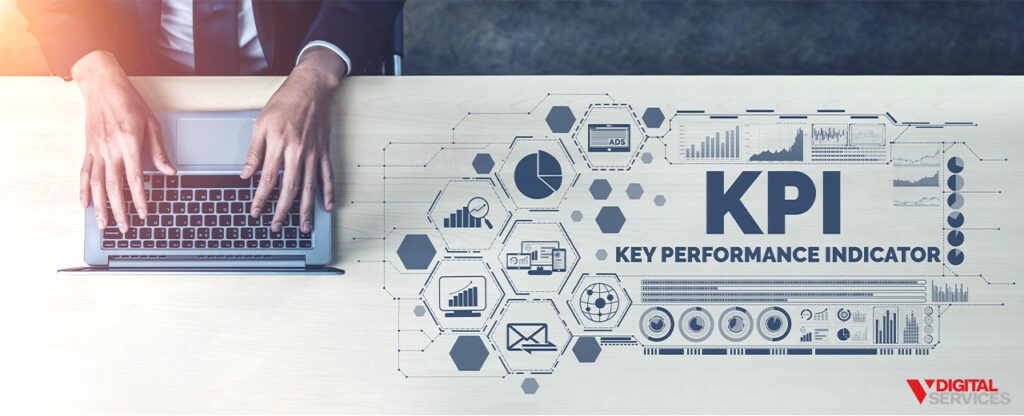In sales, data can empower teams to make informed decisions and take action to achieve (or even surpass) crucial goals. One of the most important forms of sales data comes from KPIs or Key Performance Indicators.
We’re taking a closer look at KPIs in sales, doing a deep dive into the topic, and addressing essential questions such as:
- What are KPIs in sales?
- How are sales metrics different from sales KPIs?
- Why are KPIs important in sales?
- How do you choose the best KPIs for sales?
- What KPIs should sales teams be tracking?
A solid understanding of sales KPIs can empower your business with an actionable strategy for success.
What are Sales KPIs?
“KPI” stands for “Key Performance Indicator.” KPIs are metrics used to measure a business, department, or team’s performance, specifically related to clearly defined goals.
In sales, there are many different KPIs that can be utilized, depending on the specific activities or goals you’re interested in tracking.
Sales Metrics vs. Sales KPIs
Although sales metrics and KPIs are closely linked, they are not the same.
- Sales metrics are used to measure the sales-related performance of an individual, team, or business over a specific period of time.
- Sales KPIs are used to measure performance regarding a specific strategic goal.
Look at it this way: whereas sales metrics are made up of the data produced by sales activities, sales KPIs are how a business tracks whether or not it’s meeting its objectives.
Why are Sales KPIs So Important?
Simply setting a goal isn’t enough to achieve meaningful progress in any arena. It is hugely important to define a method for tracking progress toward that goal to determine whether the current approach is successful or if adjustments are needed.
For sales, KPIs are crucial to:
- Provide clarity for everyone on the team, empowering them with the information needed to achieve the best possible outcome.
- Maintain visibility into individual/team activities and performance.
- Guide management in their decisions.
- Optimize efforts on both a “big picture” and granular level
- Offer a detailed picture of where the business is headed.
How to Choose the Right KPIs
In order to maximize the efficacy of your KPIs, selecting the right ones – and implementing the right approach – is vital.
Here are a few things to know about how to choose KPIs for sales:
- An effective KPI is “SMART”:
- Specific
- Measurable
- Achievable
- Relevant
- Timely
- Aim for quality, not quantity, so your team can zero in on top priorities.
- Be prepared with a method for tracking your KPIs.
- Understand that KPIs are not a “set it and forget it” tool. They should be constantly revisited and referred to.
- Remember that sales KPIs should be selected based on the needs of your business/team.
A Few Sales KPIs for Sales Teams to Track
While it’s true that every business should personalize its approach to developing KPIs, a handful of KPIs can be helpful for various teams/businesses.
Here is a useful breakdown of key sales KPIs that are commonly applicable.
Monthly Sales Growth
In order to survive, a business has to achieve some level of growth in its sales. Monthly sales growth is a foundational KPI that will allow sales leaders to act on trends and quickly spot potential problems, equipping them with the information needed to take quick and effective action.
Realistic monthly sales growth targets for sales teams can be a powerful motivator. Also, these targets can prove helpful in keeping sales team efforts in line with a business’s expectations and goals.
Monthly sales growth =
((Sales for the present month – sales for the previous month) / sales for the previous month) X 100
Sales Opportunities
A sales opportunity is a metric used to calculate the estimated value of a lead based explicitly on the probability that the sale will be successfully closed.
You’ll organize your prospects according to stages, like proposals or negotiations. Each stage will be assigned a weighted value, known as its “opportunity status.”
Sales opportunity =
Value of a sale X opportunity status
This KPI provides a data-driven perspective on which leads are worth pursuing, translating the intangible concept of “worth” into an actual dollar amount. Increasing sales opportunities show that there is the potential to generate higher sales, whereas decreasing sales opportunities might indicate that sales efforts should be improved.
It can also help inform the direction of your marketing strategy. For example, the potential sales opportunity of specific tactics, such as programmatic advertising or device ID targeting, may highlight just how excellent the ROI would be.
Quote-to-Close Ratio
The quote-to-close ratio illustrates the number of deals that have been closed/won vs. the total number of quotes that were sent to prospects. It is a conversion ratio that demonstrates the efficacy of a salesperson and is most often viewed alongside current trends and historical targets as a means of evaluating performance.
Quote-to-close ratio =
(Number of closed/won deals/number of quotes sent) X 100
Customer Lifetime Value (CLV)
The customer lifetime value, or CLV, is the amount a business expects to earn throughout the duration of its business relationship with a customer. This metric effectively determines which of your customer segments produce the most revenue and how much you should spend for new customer acquisition.
Customer lifetime value =
Gross margin % X average revenue per customer X retention rate
Retention and Churn Rates
Retention rate is the percentage of your customers that continue to purchase products/services from your company and directly reflects how well your sales team is retaining customers and generating ongoing revenue. As retention rates increase, it indicates that your products/services are being well-received in the market and that you have established a loyal customer following.
Retention rate =
((Number of customers at the end of a period – number of new customers acquired during the period) / starting number of customers) x 100
On the other side, churn rate is the percentage of customers that do not continue their relationships with your business (ex., Canceled contracts). If churn rates are on the rise, it can be a sign that there is an issue with the customer experience, products/services are lacking, or your competition is gaining ground.
Churn rate =
(Number of customers lost in a period/ the starting number of customers) X 100
Sales by Contact Method
The sales-by-contact method lets you track a closed deal all the way to its point of origin so that you can gain excellent insight into the most effective sales tools and strategies for your business.
Usually, this KPI is paired with others, such as individual sales rep performance, to add context. For example, one sales rep may be most successful at generating sales via phone, whereas another may be most effective via email.
Sales by contact method =
(Sales per specific contact method / total revenue) X 100
Lead-to-Sale %
Want to make sure you’re using sales channels – like social media, paid ads, SEO, content, and PR – to their full potential? Lead-to-sale % is an excellent way to do that.
The lead-to-sale %, also known as the lead conversion rate, tells you the percentage of leads that have converted to actual sales. Essentially, it shows just how effectively a prospective customer is being converted into a paying customer. It is also extremely valuable for identifying the best marketing channels for your business. Incorporating this metric as a sales KPI is a great way to align your sales and marketing efforts.
Lead-to-sale % =
(Total number of sales / total number of leads) X 100
Average Cost Per Lead
Determining the average cost per lead is a must to ensure that your business is implementing cost-effective marketing campaigns. Based on your needs, the average cost per lead can be evaluated by individual campaigns or for all marketing efforts as a whole.
Ultimately, this information will guide your marketing budget for generating new leads while pointing to the channels that generate the customers with the highest buying power. The goal is to maintain a relatively low average cost per lead while producing a high volume of high-quality leads.
Average cost per lead =
The total cost of a campaign/number of leads generated
Existing Client Engagement
Building long-lasting relationships with your customers is a fundamental principle of business. Using data focused on existing client engagement, you can better understand what your team is doing to maintain a good rapport with customers and how they keep them happy.
Social media and content creation are two marketing tactics that can be closely tied to existing client engagement, helping keep customers interested in your brand and bringing them back time and time again. If you choose existing client engagement as the basis of a sales KPI, it is a good idea to incorporate social media and content into your marketing strategy as a means of support.
Existing client engagement =
The number of interactions with a customer compared to the average length of a customer relationship.

How Can Sales KPIs Be Improved? Contact V Digital Services Today.
If you’re ready to enhance both the quality of your sales KPIs and your progress toward your goals, it’s time to connect with our team.
V Digital Services is a full-service digital marketing agency with the expertise, skills, and tools to establish strong links between your KPIs and digital strategy. Our collaborative approach ensures that your business is fully involved in the planning, implementation, and optimization processes, setting the stage for sustainable growth that aligns with your vision for the future.
When you contact V Digital Services today, learn more about how to use KPIs for sales.
Photo Credits: JulsIst, NicoElNino, Blue Planet Studio, Apichatn21





 PREVIOUS
PREVIOUS